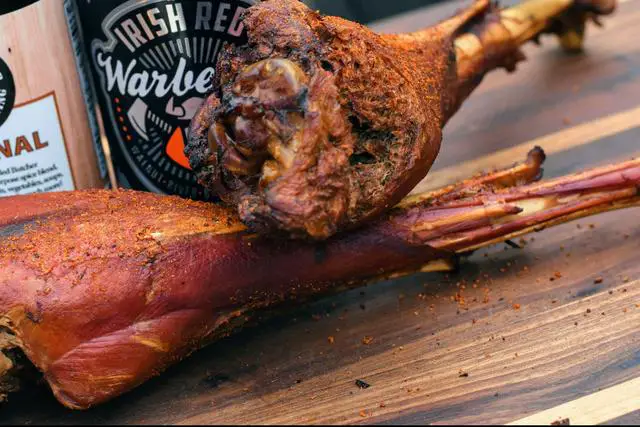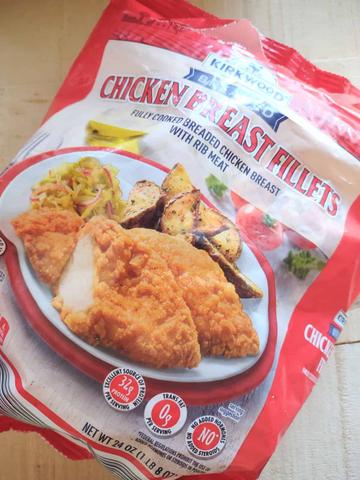
“Uncover the Curious Mystery: Ribs That Smell Like Eggs! Explore the fascinating phenomenon behind this peculiar aroma and unravel the secret flavors that make these ribs truly unique. Discover a tantalizing blend of smoky goodness and subtle hints of eggs, creating an unforgettable culinary experience. Get ready to embark on a sensory journey unlike any other!”
Pork Ribs Smells Like Sulfur or Eggs? Are they Safe?
When opening a rack of ribs from their vacuum packaging, you might be greeted with a mild smell of sulfur or eggs. This smell is usually completely normal and will go away after 10-15 minutes of being allowed to oxygenate. The meat may also appear “darker” in color due to the lack of oxygen in the vacuum packaging.

If the smell still lingers after 30 minutes of being exposed to oxygen, it’s best to discard the ribs as they may have spoiled. The Butcher’s axiom of “if in doubt, throw it out” applies here. Different methods of packaging ribs, such as vacuum sealing or modified atmosphere packaging, can impact the color, smell, and spoilage of the meat.
Vacuum packaging removes oxygen from the packaging, creating an anaerobic environment that limits bacteria growth and oxidation of the meat. Modified atmosphere packaging uses a combination of gases like oxygen, nitrogen, carbon monoxide, and carbon dioxide to preserve the meat. Fresh meat should not have any smell, but when opening a vacuum-sealed rib package, a mild sulfur/egg smell may be emitted due to sulfur constituents in the bones and bone dust from processing.
How Are Ribs Packaged?
Ribs can be packaged in a few different ways depending on the method used. One common method is vacuum sealing, where full racks of pork ribs are sealed in a high barrier film like cryovac. This process removes oxygen from the packaging to prevent oxidation and slow down spoilage. Vacuum sealing creates an anaerobic environment that limits the growth of bacteria and preserves flavor, color, and odor.
Another packaging method is Modified Atmosphere Packaging (MAP), which involves placing the meat in a plastic tray on top of an absorbent pad. The meat is vacuumed to remove air and then flushed with a modified atmosphere containing gases like oxygen, nitrogen, carbon monoxide, and carbon dioxide. These ratios are determined based on consumer preferences and help maintain freshness.
Some stores may also use “store wrap,” where ribs are placed on a foam tray with an absorbent pad underneath. The meat is wrapped in plastic film to protect it from oxygen, light, heat, moisture, and oil. However, this type of packaging has a shorter shelf life compared to vacuum sealing or MAP as it allows for some oxygen exposure.
Vacuum Sealed Ribs
When purchasing full racks of pork ribs from a grocery store, it is common to find them vacuum sealed. Vacuum packaging involves removing oxygen from the packaging to prevent oxidation of the meat and slow down the spoilage process. The lack of oxygen creates an anaerobic environment that limits the growth of bacteria. This method also prevents the evaporation of volatile compounds, preventing freezer burn or sublimation.
Vacuum sealed ribs can be packaged using different methods. One common method is cryovac packaging, where high barrier films are used to create a tight seal. Another method is Modified Atmosphere Packaging (MAP), where the meat is placed in a plastic tray on top of an absorbent pad and flushed with a modified atmosphere consisting of gases like oxygen, nitrogen, carbon monoxide, and carbon dioxide. These packaging methods have a direct impact on color, smell, and spoilage of the ribs.
Upon opening a vacuum sealed rack of ribs, you may notice a mild sulfur or egg smell. This smell is normal and usually dissipates after 10-15 minutes as the meat oxygenates. If the smell persists for longer than 30 minutes or is accompanied by off-color or slimy/sticky texture, it indicates spoilage and the ribs should be discarded. The color of vacuum sealed ribs may appear darker initially due to limited oxygen exposure. However, when exposed to oxygen, the meat will “bloom” and turn bright pink.

Modified Atmosphere Packaging (MAP) Ribs
In some cases, pork ribs may be packaged using a method called Modified Atmosphere Packaging (MAP). This packaging method involves placing the meat in a plastic tray on top of an absorbent pad. The residual air is then removed through vacuum sealing, and the tray is flushed with a modified atmosphere. The gases used in MAP are typically oxygen, nitrogen, carbon monoxide, and carbon dioxide.
The purpose of using MAP for ribs is to extend their shelf life by creating an environment that inhibits the growth of bacteria. The combination of gases in MAP helps maintain the freshness and color stability of the meat. When purchasing MAP ribs, you will likely notice that they have a bright pink color, which is associated with freshness.
Store Wrap
In my local grocery store, I tend to find country style ribs as well as packages of 3-4 spare ribs in “store wrap.” Store wrap is essentially a foam tray that holds the meat with an absorbent pad underneath. There is a then a plastic film placed around the meat and tray. The barrier considers things like oxygen, light, heat, moisture, and oil. The materials also need to be puncture and tear resistant to some extent so that they can limit the potential for oxygen exposure. These packages have the shortest shelf life as the barrier is atmosphere permeable.
The Smell of Ribs
When opening vacuum-sealed pork ribs, you may notice a mild smell of sulfur or eggs. This smell is usually completely normal and will dissipate after 10-15 minutes of being exposed to oxygen. It is caused by the sulfur constituents in the bones and bone dust from processing. If the smell lingers for more than 30 minutes or is accompanied by an off-color or slimy/sticky feeling, it indicates spoilage and the ribs should be discarded.
Pork ribs can be packaged using different methods, such as vacuum sealing with a high barrier film like cryovac or modified atmosphere packaging (MAP). Vacuum sealing removes oxygen from the packaging and slows down spoilage. MAP involves placing the meat on a plastic tray, vacuuming out residual air, and flushing it with a modified atmosphere that includes gases like oxygen, nitrogen, carbon monoxide, and carbon dioxide. The choice of packaging method affects color, smell, and spoilage of the ribs.
The color of pork ribs is based on the interaction between myoglobin (a protein that stores oxygen in cells) and oxygen. In a vacuum package, the ribs may appear dark pink, but when exposed to oxygen they “bloom” and turn bright pink. Discoloration in shades of green or brown accompanied by a lingering sweet/sour smell indicates spoilage and the meat should be discarded. Spoiled meat also has a noticeable sliminess or stickiness on its surface due to bacterial growth.

The Color of Ribs
Ribs can vary in color depending on the packaging method used. When vacuum sealed, ribs often appear dark pink in color. This is because the lack of oxygen in the packaging prevents the myoglobin protein from reacting with oxygen and turning bright pink or red. However, when the vacuum seal is broken and the ribs are exposed to oxygen, they will “bloom” and turn a brighter pink color.
If ribs are packaged using modified atmosphere packaging (MAP), they are likely to have a bright pink color. This is because MAP uses a combination of gases, including oxygen, nitrogen, carbon monoxide, and carbon dioxide, to maintain freshness and color stability. The use of carbon monoxide specifically helps preserve the red color of meat.
The Feel of the Ribs
When examining the feel of the ribs, it’s important to consider both texture and moisture. Fresh pork ribs should have a firm and slightly springy texture. They should not feel overly soft or mushy, as this can be an indication of spoilage. Additionally, the surface of the ribs should not feel slimy or sticky. This sliminess is often a sign that bacteria have started to multiply on the surface of the meat and it is best to discard the ribs in this case.
It’s worth noting that vacuum-sealed meat may have a wet surface due to what is called the “purge.” However, this liquid should not be sticky or slimy to the touch. It is simply water and myoglobin that has been released from the muscle during processing. Patting dry this liquid with a paper towel is optional, but rinsing the ribs in the sink is unnecessary and can potentially contaminate surfaces. Overall, when assessing the feel of pork ribs, it’s important to trust your instincts and discard any ribs that feel off or exhibit signs of spoilage.
In conclusion, the unexpected smell of eggs emanating from ribs can be attributed to several factors such as improper storage, bacterial growth, or the presence of sulfur compounds. While this aroma may be off-putting, it does not necessarily indicate spoilage or health hazards. It is important to ensure proper meat handling and cooking techniques to prevent any unpleasant odors and maintain food safety.
Learn More About Grilling
If you want to learn more about grilling, check out these other helpful resources!











